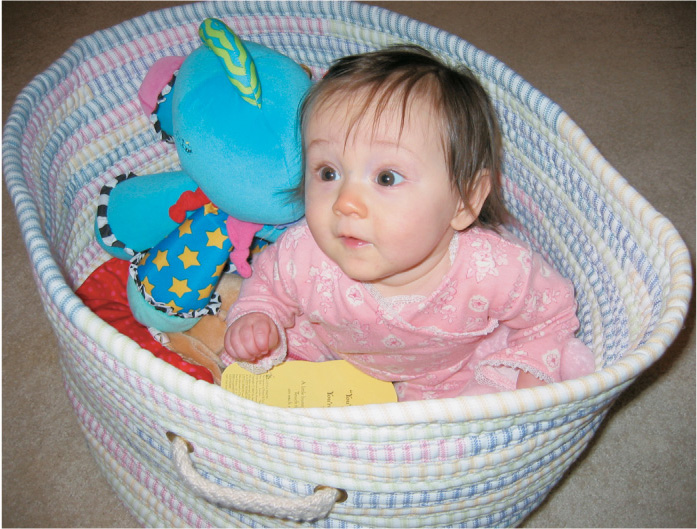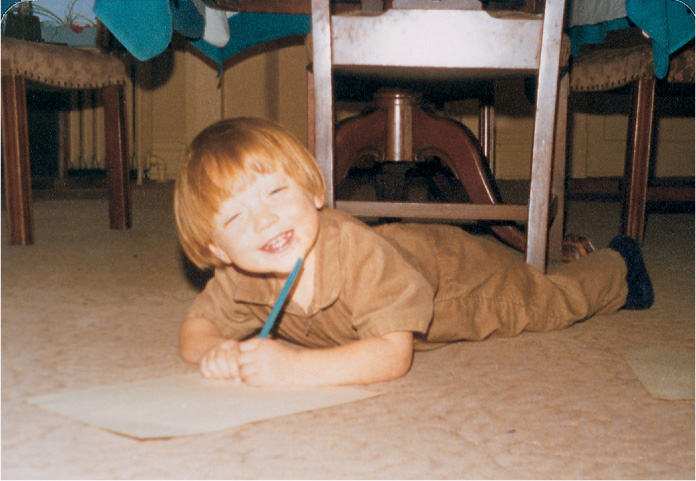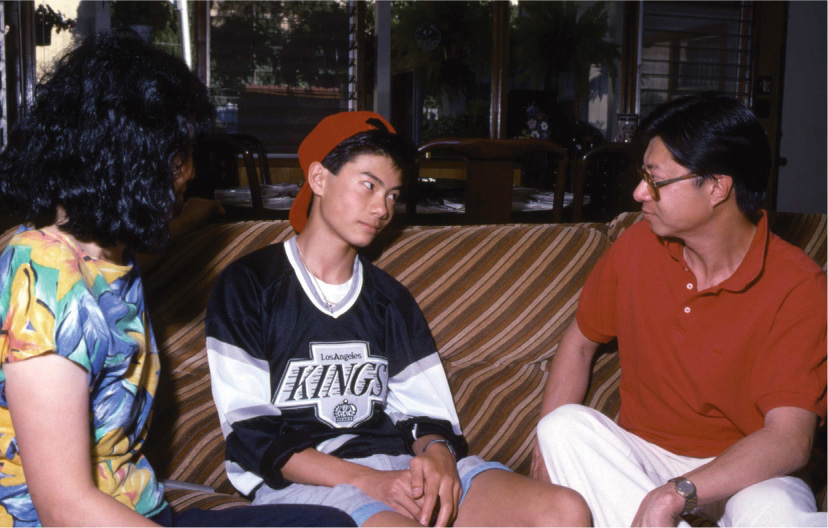Theme 2: Children Play Active Roles in Their Own Development
Children are physically active even before they leave the womb; the fetal kicking that thrills prospective parents is just the most obvious example. Less obvious is that fetuses are also mentally active. While still in the womb, they can learn enough about the sounds in a story their mother repeatedly reads aloud that, as newborns, they are able to discriminate that story from ones their mother did not read aloud. Moreover, from their first minutes outside the womb, infants selectively focus on objects and events that interest them, rather than passively gazing at whatever appears before their eyes.
642
Infants’ and older children’s actions also produce reactions in other people, which further shape the children’s development. In this section, we examine four ways in which children contribute to their own development—through physically interacting with the environment, interpreting their experience, regulating their behavior, and eliciting reactions from other people.
Self-Initiated Activity
Even in the womb, normal development depends on the fetus’s being active. Fetuses make breathing movements that strengthen their lungs, and they swallow amniotic fluid that prepares their digestive system to function properly after birth. They also “work out” various muscles by tugging on their umbilical cord, sucking their thumb, kicking, and turning somersaults.

From the day they are born, infants display looking preferences that guide their attention to the most informative aspects of the environment that their processing abilities can handle and thus enhance their learning. They like looking at objects rather than at blank fields. They like looking at moving objects rather than at stationary ones and at the edges of objects rather than at their interiors. And they particularly like looking at faces, especially their mother’s.
Infants’ ability to interact with the environment expands greatly during the first year. At around 3 months, most infants become able to follow moving objects fairly smoothly with their eyes, which improves their ability to learn about the actions occurring around them. At 6 or 7 months, most become able to crawl on their bellies, and soon after on their hands and knees; as a result, they no longer have to wait for the world to come to them. By 8 or 9 months, most can hold up their heads, which allows them to reach accurately for objects even when they are not being supported. And by 13 or 14 months, most begin to walk independently, opening new frontiers for exploration.
As development proceeds, children’s self-initiated activity extends to additional domains such as language. Toddlers delight in telling their parents the names of objects, for no reason beyond the joy of doing so. They practice talking in their cribs, even when nobody else is present to hear them. They and older children, both deaf and hearing, invent gestures and words to represent objects and events. As their language proficiency develops, children become skilled at initiating conversations that bring them information, allow them to express their feelings and desires, and help them regulate their emotions.

The effects of self-initiated activities also are seen at older ages in other areas, such as self-socialization and antisocial behavior. Throughout the world, boys and girls choose to play predominantly with members of their own gender, especially between the ages of 6 and 10 years. The play patterns reflect the children’s own choices: gender segregation is rarely imposed by adults but, rather, arises from differences in the kinds of play that boys and girls tend to prefer. Beginning in the school years, these preferences tend to be reinforced by ridicule from peers when a child crosses the “gender border.”
643
In later childhood and adolescence, children’s choices of friends and peer groups become important influences on their own behavior, in that children tend to increasingly act like their friends and others in their social group in both positive and negative ways. Thus, from the prenatal period through adolescence, children’s self-initiated activities contribute to their development.
Active Interpretation of Experience
Children also contribute to their development by trying to understand the world around them. Even in the first year, infants develop a sense of what is possible in the physical world. Thus, they look longer at an “impossible” event—such as when one solid object appears to move through the space occupied by another object, or when an object seems to be suspended in midair without support—than they do at an event that is similar but physically possible. Toddlers’ and preschoolers’ continuous “why” questions, and school-age children’s searching for the explanations of magic tricks, provide other compelling examples of children’s eagerness to understand the world.
This desire to understand also motivates young children to construct informal theories concerning inanimate objects, living things, and people. These theories allow children to go beyond the data provided by their senses to infer underlying causes. For example, preschoolers reason that there must be something inside animals that causes them to grow, breathe, have babies, get sick, and so on, even though they do not know what that something is. They also reason that inanimate objects must have different material inside them than living things do.
Children’s and adolescents’ interpretation of their experiences extends to inferences about themselves as well as about the external world. When some children fail on a task, for example, they feel sad and question their ability. Other children who fail on the same task take the failure as a challenge and an opportunity to learn. Similarly, in ambiguous situations, aggressive children tend to attribute hostile intentions to others even when the others’ motives are unclear; this interpretation sometimes leads the aggressive children to lash out before the other person can hurt them. Thus, subjective interpretations of experiences, as well as objective reality, shape development.
Self-Regulation
Another way in which children contribute to their development is by regulating their behavior. Consider how they regulate their emotions. In the first months after they are born, infants rely almost totally on parents and other caregivers to help them cope with fright and frustration. By age 6 months, they learn to cope with some upsetting situations by rubbing their bodies to soothe themselves. During the toddler and preschool periods, children become increasingly adept at using physical strategies, such as looking away, when faced with stressors or temptation. During elementary school, they increasingly use cognitive strategies, such as reminding themselves that an unpleasant experience will soon be over, to cope with negative situations. Across a wide range of ages, children who successfully regulate their emotions tend to be more popular and more socially competent than those who are less skilled at emotional regulation.
These early self-regulation skills are related to long-term developmental outcomes. For example, boys who exhibit strong self-regulation abilities in the preschool and early elementary school periods are less likely as adults to use cocaine and other drugs. Children’s early self-control also has been found to be a strong predictor of their later grades in school and of occupational and economic success in adulthood.
644
Over the course of childhood and adolescence, children increasingly regulate their development through their choice of activities. Whether young children go to sports events, movies, libraries, or religious services depends mainly on whether their parents take them there. Whether adolescents engage in the same activities depends mainly on their own preferences. Selecting moral values, choosing a romantic partner, pursuing an occupation, and deciding whether to have children are just a few of the major decisions that adolescents and young adults face. The wisdom of their choices strongly influences their subsequent lives.
Eliciting Reactions from Other People
Because children of all ages differ from one another in behavior and appearance, they evoke different reactions from other people. For example, babies with easy temperaments elicit more positive reactions from their parents than do cranky or fussy babies. Similarly, attractive babies elicit more affectionate and playful mothering than do less attractive ones. And in trying times, attractive children are less likely to suffer parental rejection and punishment than are less attractive ones. Other adults also are influenced by children’s actions. For example, when children encounter difficulty learning particular material, teachers act in more encouraging ways if the child has generally been well behaved than if the child has been badly behaved in the past.

The effects that children’s initial inclinations have on their parents’ behavior toward them multiply over time. Most parents of children who are disobedient, angry, and challenging try to be supportive but firm with them. However, if the bad behavior and defiance continue, many parents become hostile and punitive. Other parents, faced with belligerence and aggression, back down from confrontations and increasingly give in to their children’s demands. Once such negative cycles are established, they are difficult to stop. If teenagers act disruptively, and parents respond with hostility, problems generally worsen over the course of adolescence.
Children’s characteristics and behavior influence not just their parents’ and teachers’ reactions but also those of their peers. At all ages, children who are cooperative, friendly, sociable, and sensitive to others tend to be popular with their peers, whereas those who are aggressive or disruptive tend to be disliked and rejected. In some cases, peers’ reactions to one another’s behavior change with age; for example, kindergartners tend to neither like nor dislike withdrawn peers, but older elementary and middle school students tend to dislike such children. Peer reactions to children’s behavior often have long-term consequences; rejected children are more likely than popular children to have difficulty later in school and to engage in criminal activity. In many ways, then, children influence their development, not only by initiating actions, interpreting their experiences, and regulating their emotions, but also by eliciting reactions from other people that then shape their own subsequent behavior.
645